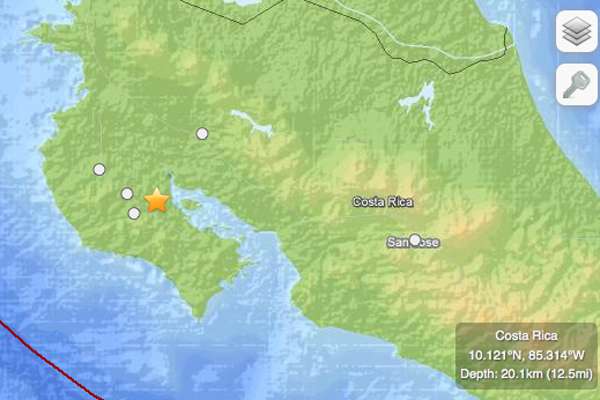Strong Earthquake Strikes Costa Rica

An earthquake of preliminary magnitude 6.5 struck Tuesday night in Costa Rica, according to the U.S. Geological Survey (USGS).
The temblor's epicenter was 8 miles (3 km) east-northeast of Hojancha, Costa Rica, and 85 miles (136km) west of the capital San Jose. It originated 12.5 miles (20.1 km) deep and struck at 6:45 p.m. local time (00:45 UTC), the USGS reports.
There were no initial reports of injuries or major damage, besides some cracked walls and broken glass in buildings in the province of Guanacaste, local news reports indicated. A series of small aftershocks rattled the area through Wednesday morning, according to the Volcanology and Seismology Observatory of Costa Rica.
The quake came seven weeks after a magnitude 7.6 temblor struck the same area, killing at least two people and sparking building collapses and landslides.
Earthquakes of the size of the one that struck Tuesday can be considered major and can cause significant damage, especially with poorly built structures. Even well designed buildings can be damaged or, in some cases, destroyed depending on the severity of the quake and a building’s proximity to the epicenter. Earthquakes of this size are sometimes followed by significant aftershocks.
But the damage caused by any single event depends on the quake's depth, proximity to populated areas, building standards in the region, as well as the type of earthquake. The USGS frequently updates the magnitude of an event after more data is analyzed.
An earthquake's magnitude is a measure of the energy released at the source. It is just one predictor of the shaking that may ensue, which is affected by local and regional geology. Scientists know in a general sense what causes Earthquakes but are unable to predict specific quakes.
Get the world’s most fascinating discoveries delivered straight to your inbox.
This article will be updated if significant additional information becomes available. Find more earthquake news here.



